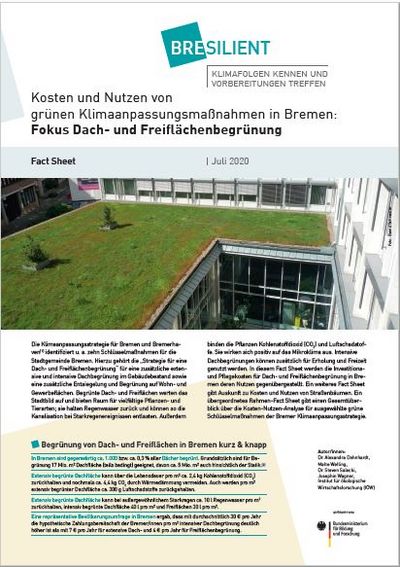Costs and benefits of green climate adaption measures in Bremen: greening roofs and open spaces
The climate adaptation strategy for Bremen and Bremerhaven identifies, among other things, ten key measures for the municipality of Bremen. These include the "Green Roof and Open Space Strategy" for additional extensive and intensive green roofs in existing buildings, as well as additional unsealing and greening on residential and commercial sites. Green roofs and open spaces provide a variety of ecosystem services (ESL). They enhance the urban landscape and provide space for diverse plant and animal species. They retain stormwater and can relieve pressure on the sewer system during heavy rain events. Plants also sequester carbon dioxide (CO2) and air pollutants and have a positive effect on the microclimate. Intensive green roofs can additionally be used for recreation and leisure. The BREsilient project conducted a cost-benefit analysis on selected adaptation measures.
In this fact sheet, the investment and maintenance costs for additional green roofs and open spaces in Bremen are compared to their benefits. The multiple benefits, mainly as a result of non-market effects, were determined using various cost- and preference-based evaluation methods, including a choice experiment. The results show that green roofs and open spaces are economically beneficial for Bremen. The monetary benefits, which outweigh the costs, result in particular from the high appreciation of the Bremen population for the additional greening, but also from the positive effects on water retention.
Another fact sheet provides information on the costs and benefits of street trees. An overarching framework fact sheet provides an overall overview of the cost-benefit analysis for selected key green measures in Bremen's climate adaptation strategy.



